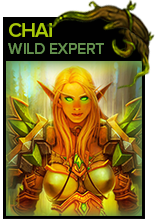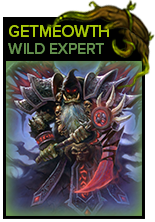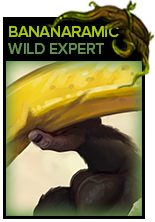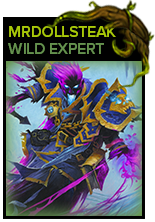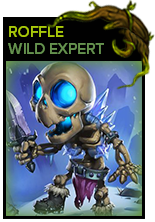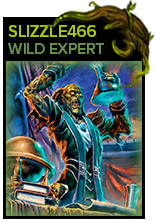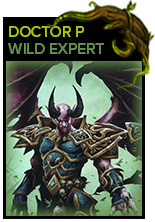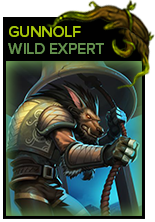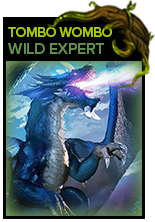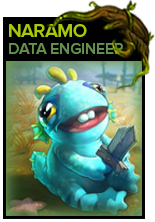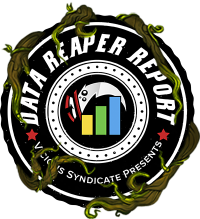
Welcome back to the Wild vS Data Reaper Report! We’re the experts from r/WildHearthstone, and we have partnered with Vicious Syndicate to create the Wild Data Reaper Report. We will be contributing the write-ups and analysis for the report, backed up by the statistics that Vicious Syndicate has become famous for. The data presented in this article is based on 50,000 games played since the Boomsday patch release on October 18, 2018.
This report is coming after our most recent set of balance changes and before the release of Rastakhan’s Rumble. At the time of our last report, Druid was heavily influential in the format, with Star Aligner and Togwaggle running rampant. With the significant nerf to Aviana, we’ve seen those two archetypes all but disappear, returning us to a meta very similar to post-patch Witchwood.
As the hype of new cards and hopefully a new meta gaining steam, we would like to remind everyone that these reports can be published only thanks to your contributions to the project. In order to have a large amount of data and publish a report quickly after the release of the expansion, we encourage you to sign up to contribute your data. Signing up is very quick & easy, and your contributions are important.
Quick Links
Class/Archetype Distribution | Matchup Winrates | vS Power Rankings | Meta Score | Class Analysis & Decklists | How to Contribute | Credits
Class/Archetype Distribution
[TABS_PRO id=16182]
Shaman has overtaken Druid as the most popular class at all ranks, reaching 21% of class representation at 4-L. Even Shaman represents a large majority of this play rate, and is the most popular deck in the game by a large margin. It has consistently been one of the most popular decks since its inception thanks to its power level and consistency.
Rogue has jumped up to the second most played class, with two main archetypes seeing play as well as the budding growth of a third. At all ranks, we see Odd Rogue and Kingsbane Rogue seeing similar amounts of play at a little over 5%. However, as we climb to higher levels of play, Odd Rogue jumps to 10%, while Kingsbane remains stagnant at 5%. We see a small, but a significant portion of “Big” Rogue emerging as well.
Warlock is the third most played class at 4-L. Reno Warlock maintains its strong presence along with the ever-persistent Zoo Warlock. However, in the aftermath of the balance changes, we see Cube Warlock coming back. This may be attributed to the disappearance of one of its worst matchups in Aluneth Mage, and players looking for alternative late game strategies after the death of Aligner Druid. Even Warlock can also be observed in small numbers.
Priest has significantly risen in play and joins the top 4, ousting Druid and Mage. While Big Priest remains the class’ main identity in Wild, we have seen the resurgence of Reno Priest. The fall of Aviana Druids has greatly helped Priest become a more prominent force in Wild format.
Paladin has slightly moved upwards, but the balance changes didn’t bring life back to many of its forgotten archetypes at higher ranks with Odd Paladin remaining the main deck. At lower levels of play, we can observe a bit more of other decks, led by Anyfin Paladin.
Mage has drastically crashed in play, almost falling to Warrior’s play rate at 4-L. The change to Mana Wyrm has seen the aggressive Aluneth Mage take a big hit in popularity. With players putting their Dirty Rats away thanks to the disappearance of Aviana Druids, Exodia Mage has come back into the meta as a counter to the Jade Druids, Big Priests, and Reno Warlocks on ladder.
Hunter has quietly seen a small uptick in play, as players still hesitate to pilot the class. Mech and Secret Hunter are the most prevalent archetypes, with Spell, Midrange, and Cube Hunter variants also observed.
Druid has fallen hard, and now sits at the bottom half of play rates with the Aviana change greatly impacting its standing in the format. Aligner and Togwaggle archetypes have all but disappeared, with Malygos Druid the primary deck to still utilize Aviana. Jade Druid has increased in play and become the main archetype of the class.
Same old, same old for Garrosh, as Warrior remains stuck at the bottom. Control Warrior and Odd Warrior have regressed since the balance changes, and Pirate Warrior is now the main competitive archetype for the class.
[TABS_PRO id=16183]

[TABS_PRO id=16184]
vS Meta Score
[TABS_PRO id=16185]
To those who don’t play Wild, the current #1 deck may come as a surprise. Veteran players, though, have learned to respect the sheer power level of Odd Paladin. The archetype’s biggest strength in the current meta is its dominance against the Rogue class, which has significantly risen in play. Furthermore, Odd Paladin has a very well-rounded matchup spread, with its primary counters coming from Priest and Warlock, but even those weaker matchups are quite winnable.
Arriving at Tier 1 and jumping to second place at 4-L, practically out of nowhere, is Even Warlock. With favorable matchups against every other Baku and Genn deck, Even Warlock is the biggest secret of the format and should begin to see more play. This is the Tier 1 deck that beats all the other Tier 1 decks; the apex predator of Wild.
Making up the rest of Tier 1 at the 4-L bracket are Wild mainstays, Even Shaman and Odd Rogue. With all four Tier 1 decks built around Genn and Baku, any newly released card in the future should be looked at with mana cost as a significant factor in any evaluation. The Data Reaper team has been hinting at the Wild dominance of Genn and Baku for a good reason: it makes their dominance of Standard look tame in comparison.
At the top of Tier 2 is another deck that’s quite a bit underrated: Reno Priest! This archetype sits near the top due to favorable matchups against the premier aggressive decks as well as being able to potentially beat slower non-armor decks with a combo kill. Big Priest comes in close behind Reno Priest as it tends to feast on the slower anti-aggro strategies that exist to counter the prevalent Even Shaman and Odd Rogue.
Finishing out the rest of Tier 2 are Pirate Warrior and Reno Warlock. Pirate Warrior has come back with a vengeance, carrying good matchups against Priests and Rogues. Reno Warlock is steady as always, with flexibility being its biggest strength. It does have quite a few poor matchups: Big Priest and Kingsbane Rogues, in particular, will give you a very hard time.
Tier 3 at 4-L is where we see the best Druid deck post-patch, as well as both of the primary Hunter archetypes. Cube Warlock also appears in Tier 3, showing up to be competitive but definitely not as strong as it was in its glory days of K&C. Rounding out Tier 3 is the polarizing and controversial Kingsbane Rogue.
In Tier 4 is we find some newcomers to the rankings, after spending most of their time with play rates under the threshold (Exodia Mage and Big Rogue). It is also the resting place of decks that ate nerfs (Aluneth Mage and Malygos Druid), and where we see the ports of a few standard meta decks (Shudderwock Shaman and Zoo Warlock).
Class Analysis & Decklists
Druid | Hunter | Mage | Paladin | Priest | Rogue | Shaman | Warlock | Warrior
The nerf to Aviana has heavily impacted the class. While many were clamoring for a nerf to Psychmelon, the hit to Aviana was significant for the long-term health of the Wild format. This change meant that Combo Druids must now rely on Innervates, Twig of the World Tree, and/or Dreampetal Florist to execute their win condition. This not only increases the number of combo pieces required but also takes up slots that were previously reserved for anti-aggro tech. As a result, we see Star Aligner Druid and Togwaggle Druid fall completely out of the meta. The dark horse of the Combo Druid archetypes, Malygos Druid, is the lone survivor (if you can call Tier 4 surviving). However, many players are adapting a style similar to Standard Malygos Druid, attempting to tempo out and finish with Malygos/Floop.
The lone Druid deck that was untouched by balance changes from our previous report is Jade Druid, which has a reasonable win rate close to the 50% mark at higher levels of play. There is quite a bit of experimentation with Jade Druid, as we see variants attempting to take advantage of Flobbidinous Floop to overwhelm slower strategies while others stick with the standard Oaken Summons build that’s better against aggressive strategies.
Nothing too significant has happened to Hunter since the last report. It continues to be one of the least played classes with two moderately successful decks, Mech Hunter and Secret Hunter, that display strong win rates at lower ranks before falling off to Tier 3 once we get past rank 5. The other selected decks have seen minor experimentation across a range of ranks, but cannot be placed on the tier list
Secret Hunter has strong matchups against some of the format’s best decks, Odd Rogue and Even Shaman, but has a miserable time against Big Priest and Reno Warlock, which keep it down. The featured list was used by Duwin to reach legend this month. He’s continuing to experiment, with Azalina showing up in his latest iteration.
While the balance changes have removed one of Hunter’s best matchups in Aluneth Mage, the return of Big Priest is something that Mech Hunter has been able to capitalize upon. Unlike Secret Hunter, Mech Hunter is able to establish a highly threatening board in the early turns, and take down opponents before running out of steam becomes an issue. At higher levels of play, Mech Hunter trails behind Secret Hunter since it struggles to deal with the early game of Genn and Baku decks.
- Mech Hunter
- Duwin’s Legend Azalina Secret Hunter
- Duwin’s Spell Hunter
- GetMeowth’s Deathrattle Hunter
- RenoJackson’s Legend N’Zoth Mech Dire Frenzy Control Hunter
As one of three classes to suffer a big nerf (Mana Wyrm), Mage has unsurprisingly gone down in play rate since the last report. As the class generally falters, we’ve seen a surprising resurgence in some of its older decks. Both Freeze Mage and Exodia Mage are seeing more play than before the nerf.
Reno Mage is unfortunately back on its downwards spiraling path, having dropped in both play rate and win rate. It is difficult for the deck to deal with many of the current popular archetypes, with very little success overall, even against aggressive decks.
Aluneth Mage isn’t completely dead yet. Despite the loss of Mana Wyrm, a few players have been tinkering and finding some success with the archetype. Players are now running Kabal Lackeys and Secretkeepers as substitute 1-drops. Although these substitutions are workable, the deck is definitely struggling to maintain its spot in the meta.
Exodia Mage & Freeze Mage are very similar decks. One has an infinite damage combo with weaker cards against aggressive decks, while the other has a finite damage combo with stronger cards against aggressive decks. Both have been seeing more play recently, but they are still fairly niche.
The balance changes have been good news for the Light! With less Spreading Plagues and more Rogues, it’s a great time to be playing Odd Paladin. No matter which bracket you look at, the deck is sitting comfortably at the top of the Power Rankings. The archetype’s tremendous refill potential gives it game against all but the most AOE redundant control decks. In fact, its only unfavoured matchups are against Even Shaman and controlling Warlock or Priest decks, with Reno Warlock acting as the hardest counter. The potential rise of massively-underrepresented Even Warlock, as detailed in this report, does bode poorly for Odd Paladin’s spot as a top dog, but doesn’t threaten its status as a powerful, consistent deck that’s here for the long term and which has occupied Tier 1 or Tier 2 in our reports since Baku’s release. The featured list from 176cm67kg packs pairs of high impact cards Zombie Chow, Corridor Creeper, and Fungalmancer, a decision now common outside the Asia server.
Anyfin Paladin has been seeing more representation on ladder since it came back from the dead last report, but we can’t lock it into a Tier or provide matchup data for it. There are two competing skeletons – a secrets-based one that chews through its deck with Mysterious Challengers and Divine Favor, and a controlling build that runs now-typical Control Paladin tools such as Dirty Rats, Uther of the Ebon Blade, Shrink Ray, and sometimes a Corpsetaker package. Regardless of the different game plans, both pack a potent combo finisher that can deal 22 damage on its first cast and 44 damage with the second. With Druid’s armor and scarabs less of a meta concern, the combo kill is more viable in Wild.
For the Priest class, the big surprise of this report is Reno Priest. Previously, the archetype seemed to be surviving solely on its highly favorable matchup against the ever-popular Even Shaman. Now, as players continue to refine their builds of this once-erratic archetype, the deck has jumped up the tier list in the current report. Most of the top performing decks in Wild are minion-centric decks. This plays directly into Reno Priest’s ability to decimate opposing boards, especially for builds centered on the increasingly popular dragon package. The absence of Combo Druids in the format appears to have given Reno Priest the space it needed to perform well.
As many expected (or feared?), Big Priest remains in a strong position after the balance changes. Two poor matchups for the deck were essentially eliminated with the Aviana nerf while a third, in Aluneth Mage, has diminished in both popularity and power. A facile watcher of the format might assume that this combination would propel Big Priest to the top of the meta but while the deck has increased in its popularity, it has actually dropped in its win rate. This can, in part, be attributed to an uptick in Rogues, especially Kingsbane Rogue, which is an oppressive counter. Still, Big Priest continues to assert itself as one of the top archetypes in the format despite little changes to the deck since Kobolds & Catacombs.
Dragon Priest, on the other hand, continues to struggle. Some loyalists, however, continue to play the archetype. Decks tend to lean either towards the Inner Fire combo or a more midrange build, but neither focus is enough to pull Dragon Priest out of Tier 4 in the low sample estimates.
The Rogue class remains steadfast in its approach to conquering the Wild ladder. Odd Rogue continues to be a Tier 1 deck, and one of the premiere aggressive decks of the format. There have been minuscule shifts in lists. In last month’s report, we discussed a difference of opinion among players regarding the inclusion of Edwin & Myra’s Unstable Element. With the advantage of time, we now see that more and more pilots are starting to shy away from both cards.
Kingsbane Rogue retains its Tier 3 status. It mostly preys on slower decks while struggling against aggressive opponents. It is the most polarizing deck in the format, which makes its success very meta dependent.
This month, we see a rise in play for another Rogue archetype; Big Rogue. Mimicking its Priest counterpart to an extent, this version of Rogue fully intends to take advantage of the often limited removal of slower decks while simultaneously churning out large threats turn after turn. Unfortunately, unlike its established counterpart, it has very little sustainability and can often find itself overrun in the mid to late game.
While Even Shaman is the most popular deck in the current Wild meta, its power level does not surpass other Tier 1 decks since the meta is warped to beat it. The removal of Combo Druids from the Wild meta has also opened up the potential emergence of counters such as Reno Priest and Even Warlock. There isn’t much in the way of tech cards to help Even Shaman in these two matchups, so it’s recommended that you tech to improve your matchups against the more popular Odd Paladin and Odd Rogue. Top legend player gorky has found success by including two Thunderheads in his list, which are great for picking off Silver Hand Recruits and/or pirates when combined with the various overload cards in the deck.
Shudderwock Shaman remains at the bottom of Tier 4 while seeing a hint of play through Wild ladder. The deck pretty much loses to everything but the slowest decks in the format, with Gluttonous Ooze acting like the MVP against Kingsbane Rogue because of the ability to trigger its battlecry repeatedly with Shudderwock shenanigans. Loatheb is also an amazing card in Shudderwock Shaman since it can lock a slower deck out of doing anything meaningful against the Shaman’s win condition.
Despite not touching any Warlock class cards, the recent balance changes have had a huge impact on the class. Though Reno Warlock remains a popular and powerful choice, the big surprise this month is the historically underplayed Even Warlock, which has risen straight to Tier 1. Cubelock has also made a comeback this month but has failed to reach its previous lofty heights. Somehow, despite an absolutely horrendous win rate, Zoo Warlock continues to see limited play. With terrible matchups against all the most popular archetypes and its inability to contest the board against the Genn and Baku powerhouses of Wild, it’s hard to see its win rate improving without a major change in the meta and a big boost in its own power level.
The balance changes brought a mixed bag for Reno Warlock. While it no longer needs to run Demonic Project (a card that was terrible against anything but Aviana Druids), and with Aluneth Mage greatly weakened, the return of Big Priest and Kingsbane Rogue have kept the archetype at bay. With Demonic Project and Giggling Inventor gone from the meta, cards such as Gluttonous Ooze (anti-Kingsbane) and Stonehill Defender have reappeared.
Even Warlock is massively underplayed in the meta while presenting a meta breaking win rate. Given its excellent performance against all the other Tier 1 decks, and the fact that the archetype remains somewhat unexplored, we should expect to see a big increase in its play between now and the new expansion. While some players have favored dropping Bloodreaver Gul’dan for more aggressive cards, other have taken the archetype in a more control-oriented direction, including cards such as Skulking Geist and Dread Infernal.
The nerfs giveth and the nerfs taketh away. Following the changes to Dark Pact and Possessed Lackey, Cube Warlock fell out of favor. Now, with players more open to experimentation after Combo Druid’s demise, the deck is back on the menu. H1J0_HS has been particularly successful with the archetype, piloting it all the way to #1 Legend with Possessed Lackey and Prince Taldaram. Meanwhile, ConcernedMom managed to get to #12 Legend, but with a novel decklist, favoring extra heal (both Pacts) and double Sense Demons to extract maximum value from Skull of the Man’ari. While it’s not likely to reach the lofty heights of the K&C version, Cube Warlock remains a solid choice for those wanting something a little different but still powerful.
And finally, we come to Zoo Warlock, the worst performing archetype in this month’s report. The data struggles to explain its continued play, but it’s often a deck accessible to budget players. With a 40% win rate, there’s very little to get excited about with this archetype. Zoo Warlock’s struggles perfectly capture how strong the early game of Baku and Genn is in an eternal format. Maybe the upcoming expansion will breathe new life into this tired old deck, but until then, it’s pure rank-floor material.
- CONCERNEDMOM’s Cubelock
- H1J0’s Cubelock
- GetMeowth’s Renolock
- Roffle’s Even Warlock
- Gunnolf’s Even Warlock
- Zoolock
Warrior has managed to plug along yet another expansion by being the underdog in terms of deck variety. Pirate, Odd, and Control Warrior are the class’ primary archetypes, with the latter two declining in play since the last report as armor gain has generally been less valuable after the fall of Aligner Druid.
Pirate Warrior still gets the job done, and is the only aggressive deck in the format that’s not completely outclassed by Genn and Baku. Its biggest niche is its matchups against Kingsbane Rogue and Big Priest. It heavily punishes passive decks that take time to ramp up by going for their throats early.
While a meta of slower decks is a boon to Pirate Warrior, such meta is often the bane of Control Warrior. Warrior as a class simply cannot handle the sheer number of threats or exponential value that Big Priest or Reno decks pack in their arsenal. The only hope for Control Warrior is running DMH, shuffling and drawing into your removal as often as you’ll need it, but that’s a best-case scenario that doesn’t happen consistently enough.
Odd Warrior is an attempt to square this circle. It has a much better time handling aggressive strategies, and with a well-timed Azalina, it can match the Reno decks in value output. Just don’t run into Archbishop Benedictus, because you’re a dog to fatigue.
Our Data Reaper Project, including the Data Reaper Live has 4,500 active contributors. Without them, this project would not be possible, so we’d like to thank all of our contributors for their help.
Preparing our weekly article requires a significant amount of time and effort from many individuals. We would like to wholeheartedly thank our current Patreons, whose generous donations help us fund computing and server costs.
vS Gold is a new membership plan aimed to support our efforts towards improving our content and data analysis while receiving some bonuses and extra features.
Contributors
Here are all the people that participated in bringing you this edition of the [Wild] vS Data Reaper Report:
















